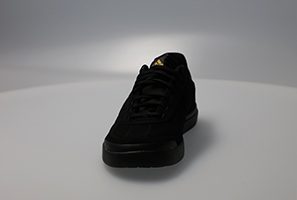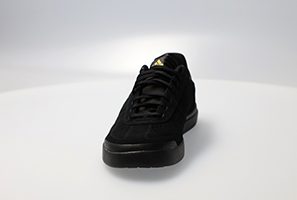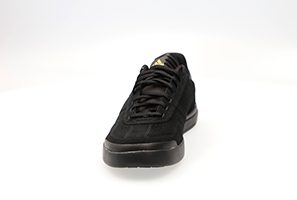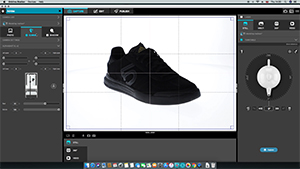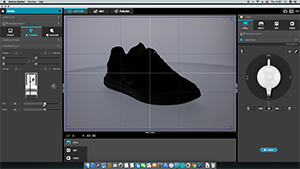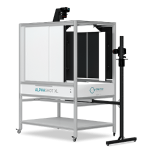360 product photography – The ultimate guide
In this article, I will help you to better understand the 360 spin technology itself, so you know when and how to present your products in the best possible way, so your business and your customer can benefit from it. This article is aimed for professionals who would like to benefit from 360° photography in their businesses (sorry, but no DIY guides here).
What is 360° product photography?
360-degree product photography (also referred to as 360° photography, 360° spin, 360° packshot, or 360 spin photography) is a type of product content that allows you to capture and present products from different angles. It is mainly used in e-shops, on product pages and social media wherever you want to give more information about the product and engage your customers. It is usually made of a row of single photographs taken at even angles around the object (e.g. 10°) combined into a single view, which simulates object rotation.
Interesting fact
Interesting fact
Do you know, that 360° product spins were introduced for the first time by Apple Inc.? In 1994 Apple introduced the Quick Time Virtual Reality technology (QTVR). Although QTVR mostly focused on 360° panoramas it also included a specification for QTVR Object Movies. Today QTVR is not used anymore for 360° degree product presentations.
Types of 360° spin photography for ecommerce products
The main purpose of 360° product photography is to provide more information about the product to consumers. Over the past years, 360° product photography evolved into more advanced variants of product presentations, which can give even more information: deep zoom 360 spins, 3D spins (multi-raw spins ), product animations and product tours. Nowadays 360° spins are usually interactive: a user can drag an object with the mouse to rotate it, but you can still find applications for non-interactive spins. Here below I will describe all the most popular types of the 360-degree product presentation:
Non-interactive 360° animations
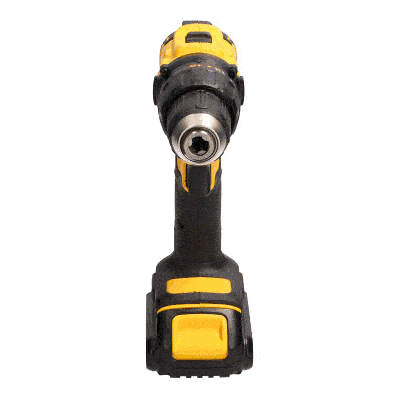
Traditionally non-interactive product spins used GIF format. Today you can still use it in social media (especially on Twitter, Instagram) or when you need to send a spin via email. The biggest advantage of GIF animation is that the whole spin is embedded into a single image file which is widely used standard compatible with the most exotic web browsers, email clients and any other software in general. However, the list of disadvantages is quite significant:
- Low quality – a small number of colours (8-bit which transfers to 256 single colours vs 24-bit and 16M+ colours in any other format)
- Big size – GIF animations do not compress well and are quite large
- Low engagement level from the potential customer
- Less informative than interactive spin, however, brings more informative then still photography
Newer animation file formats (APNG Animated WebP) can offer better quality (APNG WebP) and lower size (WebP), but may not be compatible with all web browser versions and are still not providing any interactivity.
In most situations, it’s a better idea to use MPEG-4/H.264 video instead (using html5 video tag configured properly), which compresses a way better than GIF, matches compatibility of the GIF format, provides basic interactivity (user can rotate an object using timeline) and allows full-screen preview.
Interactive 360-degree product photography
Interactive 360° spin of DeWALT drill. Press play to start, use gestures or mouse to rotate (drag) & zoom (scroll)
The interactive 360° spins allow you to freely rotate the object as you drag your mouse or move your finger on the spin. More advanced 360° would also allow you to zoom into a product to see more details (Deep Zoom technology). The biggest advantage of the interactive spin is a way better product experience: you allow your customer to “play with your product” while he gets to know your product better. The disadvantage is usually a larger file size and a need to use a dedicated scrip on a website: 360° image viewer.
Multi-row 360° spin – aka 3D product photography, hemispherical/spherical product spin
A multi-row 3D spin of DeWALT drill. Press play to start, while you are spinning the content is downloaded, after while you can view the full 3D spin
Multi-raw 3D spin is a variation of the standard 360° product view technique where the product images are also taken at several vertical angles (rows). Usually, 2-3 additional rows are taken in case of hemispherical spin (you can see product 360° horizontally and 180° vertically) and 4-6 for the spherical one (full 360° view in both horizontal and vertical direction). The total number of images can be huge: 4-rows of 36 image spin result in 144 single images.
This can give more information about a product, which is shown truly from each side revealing hidden features at the top and bottom sides. The disadvantage is the complexity and cost of capturing the full 3D view, which requires proper product photography equipment (specialised software, photography turntable, 3D arm and usually multiple cameras). The size of files can be also significant and it requires a dedicated 3D spin viewer script installed on a website, which can handle a large amount of data in an efficient way. Because you cannot afford to shoot too many vertical angles the horizontal rotation is usually much smoother than the vertical one. It makes experiencing the 3D view to be jerky and feeling overall lower quality.
Double-axis 360° spin
Dual-axis spin of DeWALT drill
Double, or two-axis 360° product photography is a combination of two 360° product images: one horizontal (a standard 360° spin and a vertical one. Technically it works precisely the same as 360° spin, it is, however, more tricky to capture. In most situations, using a double 360° product spin is a better option than spherical and hemispherical spins as it requires less effort to produce, the total size of the 360° product view is smaller than spherical or semispherical one.
Product animations
360-degree spin + animation (Alphashot MICRO). Click the play button to start
360° product photography technology can be also used to create time-lapse like product animations, where you show specific features of your product by animating them. It can be combined with the spin of a product. It can give much more information about product features, especially on moving parts. Here below you can see how we captured our 360° jewellery photography studio to show not only the product but also the lighting and vertical camera movement.
Virtual product tours
DeWALT drill product tour. Press play to start, use thumbnails to change view, hover over hotspots to see details
The virtual product tours are the ultimate way of presenting a product while using 360° product images. By combining 360° product images with packshots and videos, you can create predefined product views, hotspots to show-off the most important features of your products. Once prohibitively expensive, today you can use online tools such as Orbitvu SUN Orbittour which significantly lower the time and cost of creating one.
Video animations
Animation made from a video clip. Press play button to start
Although a different content category to a 360-degree spin, it can use the 360-degree viewer technology to display a video clip. The user can interactively play and rewind the video, stop at a given frame and zoom in for details, which is not easy with typical video files. Animations made from videos usually have a large number of images (frames) and require a specialised viewer (e.g. Orbitvu Viewer), which is capable of dynamic on-demand loading of the individual frames. This allows you to quickly show the preview and load images on-demand only when the user interacts with the image. Used more commonly in fashion, for interactive on-model pictures. Its big advantage is the possibility to present how apparel interacts with a human model. The online consumer can get a better understanding of material texture and its dynamics: how it bends, creases and acts with air. As a result, the customer’s brain can visualise the material as if he was touching the product.
Benefits of using 360° photography in an e-shop
360° product views can reduce the gap between the online and brick-and-mortar product experience where you can look around, touch and feel the product. Benefits of having such rich content on a website can be significant:
- better informed clients – having products shot in 360° view can add a significant amount of information to a product: it not only shows hidden product features but gives more information about product shape and material it was made from
- more buying confidence – as a result customers can experience products online closer to reality and they will make more aware buying decisions
- fewer returns – more confidence of buying a product is less chance to return it – it means happy and returning customers and fewer operational costs for your business
- fewer questions asked – because “the image is worth 1000 words”. You never know what detail your client needs to know about your product. Supplying quality product images, 360° packshots or virtual product tours can reduce the number of questions asked
- staying competitive – a good product experience is part of your overall website user experience. It’s one of the key factors to differentiate yourself from the competition.
When my products should be shot in 360° view?
Mouse pad 360° spin. Click the play button to start
Although 360° spins are very beneficial not every product will benefit from it and justify added costs of 360° content production. Moreover, there are even fewer products that will really benefit from full hemispherical or spherical product view. The question you have to ask yourself is: “will it benefit my customers? “. Not every product shot in 360° view will add more information. Imagine a mouse pad or any similar flat item – the 360° view is not adding anything. Two or three packshots can provide the same or more information.

On the contrary, most of the 3-dimensional products will benefit from 360° view, however, you need to consider whether it’s really worth the effort, if and what kind of additional information you can provide. To help you out I divided the information into several categories:
Shape visualisation
Cannondale bike 360° spin. Click the play button to start and take a look at the other side of the bike – interesting, isn’t it?
The most obvious application of 360° spin is to better show the shape of a product. A few still shots may not be enough to give a good idea on product shape. Almost any three-dimensional product would benefit from it. Some products, such as extremely technical products (e.g. complicated spare parts, electronics, tools, sports goods) would benefit from double-axis or hemispherical and spherical spins.
Material feeling
Yellow bag in 360 view. Notice how the reflection is playing on the material revealing its glossy finish
Online buyers cannot touch the product, but they can recall the tactile feeling of a similar product and 360 photos and video animations can help a lot. Especially important for stylish fashion products, where material structure, touch and feel are important and there is no way to touch product over distance. Product categories include watches, bags, shoes, accessories and apparel, but also some furniture, electronics, etc. Light playing on a product being rotated 360 degrees will reflect, create shadows and highlights revealing material structure. Our human brain will do the rest of the job – it will bring back memories of similar products touched in the past and bring back the touch sensation as if we were touching the product physically.
Product features
360° spin of JBL speaker. Take a look how many details you can discover by rotating & zooming into this product
All complex technical products, such as electronics, tools, home appliances, sports goods will benefit from a single-row 360° view, but it is worth considering to use a virtual product tour. You can highlight features you want, guide the user over the product and allow him to discover the product by himself.
On the other end spare parts, electronic and electrical components can have hidden features you would not think to photograph in a still shot – e.g. a small switch hidden in the back. Without this information, a technician making a repair and having a part in his hand has to call your e-shop to verify if the switch is there. As a rule of thumb, in the case of more complex spare parts and components, it’s a good idea to photograph all products in 360° view.
How to capture products in 360-degree view?
When deciding to go for 360° on your website, and especially in an e-shop, you need to consider several aspects:
- 360° images have to be produced – in-house or subcontracting service, you need quality images to be shot at a budget at some volumes.
- you need a good 360° object viewer – optimized for desktop and mobile, interactive, SEO optimized fast & lazy loading
- you need a 360° process – jobs must be planned, images must be shot, named, verified and uploaded online.
What is the 360° viewer?
Being more precise – the 360° Object Viewer allows you to interactively view a 360° spin on a website. Technically speaking it’s a Javascript application, usually in the form of .js and .css files, which are installed on your website by a web developer. The viewer reacts on user input (mouse drag, touch gestures, keyboard shortcuts) and allows to rotate and zoom the object. When all is set up, you upload individual images of a 360° product view to your webserver and the script does the rest. Without the 360° viewer you lose a lot of 360° spin features: interaction, zoom, lazy loading, etc. You need to do your homework researching for the best viewer: test several options, check licenses, check how reliable it is and if it is frequently upgraded, and choose the best one. Do not save money here – it will be a fraction of the cost of website implementation and it will be with your website for a long time.

What is a good 360° image?
A good quality 360° image serves its main purpose of providing mode information about a product in respect of its shape, features and texture. But, as usual, it’s more complicated than this and quality of a final spin will depend also on the 360° viewer.
- information – how much shape, texture and feature the image carries? This requires the product to be lit properly, the camera to be positioned at an angle which captures most of the product, etc.
Bad example – front angle – not visible details in the top part, – image too dark – fewer details in shadows – poor starting image – does not give an overall idea about the product
Good example – higher angle – more details in the top, well-exposed image – more details dark areas – good starting frame – product can be recognized immediately
- aesthetics – the product should be prepared before placed on a turntable: shoes should have shoelaces tied, a bag should be filled, a product should be clean. The optimal resolution should not be too small (so the customer can see details of your product) and not too big (you don’t want to show a microscopic view of your product and it’s imperfections ). The number of frames should give an impression of smooth rotation – a min. of 36 or better 72 or more.
- speed (SEO friendly) – images must load fast including 360°. Individual images of the 360° view, should be stored as compressed JPGs or WebP (if your web server supports browser aware content and can send WebP images to Chromium browsers and JPGs to Safari). High frame spins should be lazy-loaded (only when the user starts to interact with them). Modern 360° viewers support lazy loading and dynamic loading: initially, only a small number of frames are loaded – e.g. 6 and while the user interacts with the 360° photo, the remaining frames are loaded, which improves the rotation smoothness over time. Some 360° enable external control via API allowing to start downloading images only when the user scrolls to the 360° view.
No dynamic loading. User has to wait for all images to load before he can start spinning
Dynamic loading. User can start spinning immediately and images are loaded in the background
- mobile-friendly – this mostly involves the 360° viewer and how it is implemented on a website. A mobile-friendly spin scales automatically to the web browser window size, it enables touch gestures – rotate, zoom, move. It doesn’t require control buttons for zoom. It should also support SEO speed features described above.
- web browser compatibility – nowadays things are much easier with more browsers providing the same features. Still, to take the best out of each browser you need a viewer which can get the best out of each. For example, Chrome supports WebP image standard, which compresses much better than JPEG at the same quality. Why not serve WebP for Chrome and JPEG for Safari? Google (SEO) will be very happy seeing WebP images served from your server. One other important factor is the underlying image display technology in the Viewer window: due to small incompatibilities using CSS + <image> is not reliable and causes various issues. The best 360° Viewers display images on <canvas> element, where it has full control over each image pixel being displayed.
Do I need a 360° content creation process?
You will have it whether you like it or not. How much it will be formalized and managed with external tools is another story. You still need to plan a session, someone needs to capture images, someone else needs to verify if it’s ok and place it online. Usually, it will be a part of the image content production process, but it might be a separate one. Anyway, it’s a good idea to think of it ahead:
- create style guides – which of your product categories need spins? all? few? only the more expensive ones? How many images per spin? camera angles? What are the acceptance criteria?
It’s great to have the style guide for in-house photo studios as well as when ordering service. - responsibilities – who plans the session and who accepts images? Can the photographer also approve images or you need QA?
- image naming – the simplest way to automate image linking to a specific product in an e-shop is by using a unique SKU in the file name. E.g. if SKU is 1234566, individual image names can be 1234566_1.jpg, 1234566_2.jpg …… 1234566_36.jpg. It’s a good idea to specify it before taking images in-house or sending them to a service provider.
Buy a 360° product photography service
The obvious way to get your products photographed in 360° view is to buy a photography service. It will work for you when no. of products to shoot is not big and logistics it not too expensive.
How much 360° product photography service costs?
The end price of a single 360° spin will depend on several factors:
- your product – Is it easy to rotate on a turntable? Will it wobble? Will it require hanging? Does it require special preparations? The size? – Some product (e.g. a laptop, a glass, a TV set, a tire, shoes etc.) are easy to be placed and rotated on a table, while the others (e.g. bags with straps, a necklace, a ceiling lamp, etc.) require suspension, sophisticated hardware and software.
- logistics – Is your product expensive and require insurance? Is your product heavy? If your product is heavy and bulky you need to find a spin studio, which can manage it. Maybe it’s more cost-effective to shoot your products in your warehouse? Or maybe it’s easier to make 360° images with CGI? – in some situations, if you have a 3D model (you are a designer and producer) it might be equally informative. Imagine a 360° spin of an industrial machine.
- volumes – the higher volumes can put you in a better negotiating position unless you have a difficult product to stand on its own on a turntable (then see the point above).
- type of 360 photography – do you require hemispherical or is single row spin enough? Do you also need separate packshots, or you can “reuse” images taken with the 360° view? how many images per row? – advantage of having a high quality 360° spin is that you can reuse individual frames for packshots of your product.
- quality – it means you receive high quality 360° images which show your product features, material at optimal resolution. It usually means that your products will be shot by experienced photographers using proper equipment.
- license – last but not least – can you reuse individual images? (make sure the license contract permits this), can you use it anywhere you need (e.g. social media)? Will you receive just a 360° spin or also hi-resolution individual images?
As you suspect there is no one price fits all, but for a quality spin you can expect a total cost of anything from 30 USD – up for a single good quality 360° spin.
How is 360° view supplied by a 360° photo studio?
When picking a photo studio which can provide such service, you need to consider, among other things, how the 360° images will be supplied:
- as separate image files, which can be combined into a spin on your website using your own 360° Viewer. By own, I mean researched, evaluated and chosen by yourself – in this way you have control and a level of guarantee of the viewer quality.
- as a folder with a bunch of image files with a 360° Viewer and embedding script – in this case, you get the whole thing altogether: images + viewer. It may seem like a good idea, but you still need to install the viewer and you get a viewer, which may not satisfy your needs. You also get “locked” to a specific photographer with a specific Viewer.
- uploaded directly to your e-shop via 360° plugin – for most common e-shop platforms (e.g. Orbitvu e-commerce plugins for Magento, Prestashop, WooCommerce etc.) there are plugins, which take the whole 360° Viewer installation complexity away. You install a plugin, order a service and you get your spins unloaded on your e-shop directly.
- using a 360° spin hosting/sharing service – there are online platforms (e.g. Orbitvu Sun), where the photo studio can upload 360° and it can be automatically linked to your product in your e-shop.
In-house 360° product photography studio
If the volumes are higher, or logistics are complicated and costs of 360° photography outsourcing are too high, you may consider your own 360-degree photo studio. You have several choices, but in general, it can be reduced to choosing between a traditional 360° photo studio, or an automated photo studio which does 360° out-of-the-box.
What is the automated photo studio for 360 product photography?
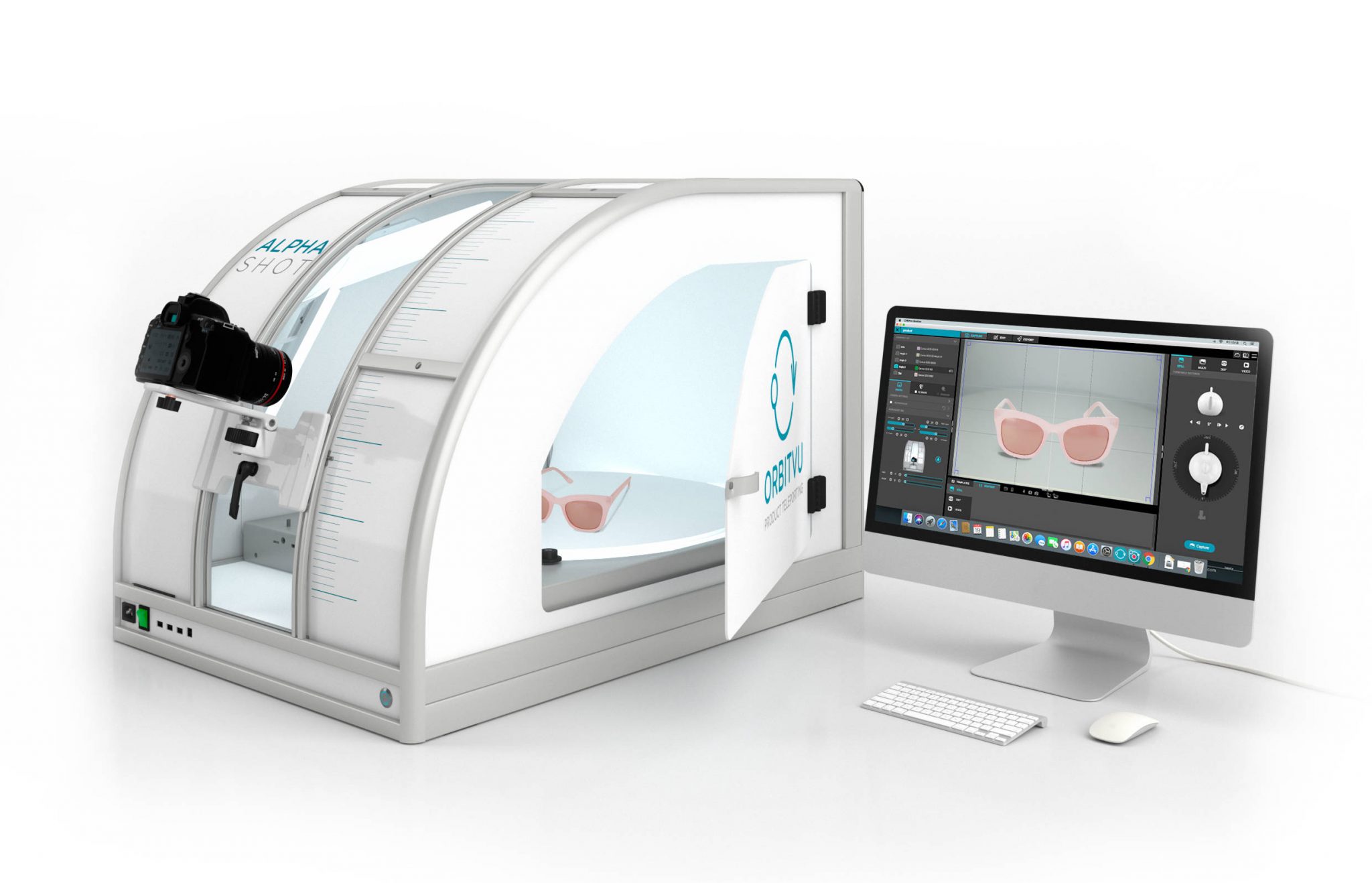
An automated photo studio is usually a closed photography cabin, controlled by software, which integrates light, camera, product positioning (turntable) and image post-production in one system. It can capture stills, videos and 360° spins in a single process. An example of an automated photography studio is Orbitvu Alphashot XL. This device is capable of taking 360°/3D spins, multi-camera packshots and product videos. Masking technology allows you to capture images and automatically remove the background and replace it with a pure white background. Output images are automatically scaled, cropped, centred, etc. The publish process uploads images directly to e-shop or to a cloud sharing service.
Traditional vs automated photo studio for packshots and 360°spins
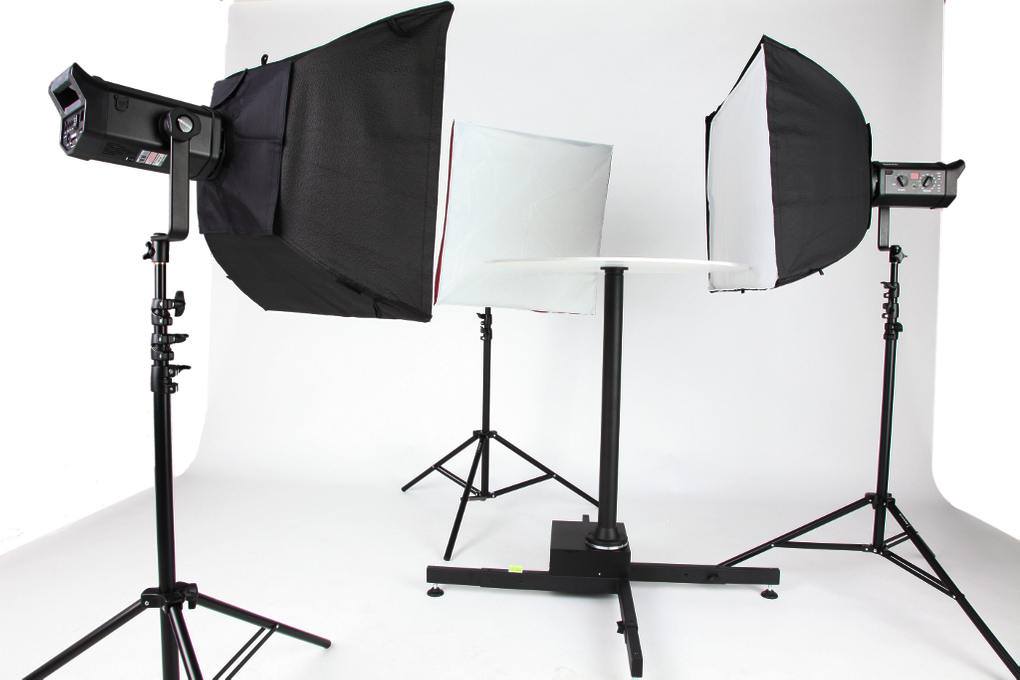
The main difference between automated and traditional photo studios is flexibility and ability to modify and adapt it for different types of products and photography. Automated studios are usually dedicated to limited types of products and sizes, and do not allow full freedom in light shaping and modification.
Traditional studios are great when you need to be creative with each product shot and are great for creative and styled photography for marketing purposes, but you need experienced studio photographers who can operate it. 360° product photography equipment is usually a separate element sourced separately.
On top of the equipment, you also need additional software (e.g. Photoshop/Affinity photo) and someone to operate it. 360° equipment usually comes with its own software.
Automated photo studios have some limitations in terms of flexibility but are great whenever you need consistent, repetitive photography done by people with less or little photography skills. The hardware (lighting, turntable and camera) are tightly integrated into the software so the capture -> post-production -> export -> publish steps can be combined into a seamless process. Real automated studios come with 360° turntables out of the box as it is used for product positioning/rotation.
Automated photo studios are highly scalable in contrast to traditional photography. The whole shot settings including camera setup, lighting, object positions, post-production, publish profiles, etc. can be stored in a template, which can easily be reproduced on another workstation. In the traditional photo studio, you need highly skilled people to set up and manage the process of setting up a new studio/workstation.
| Feature | Traditional photo studio | Automated photo studio |
| Flexibility | Great | Limited |
| Efficiency | Moderate | High |
| Required operator skills | Advanced to Expert | Junior to Medium |
| Scalability | Limited | Great |
| Output quality | Very good - Excellent | Good - Very good |
| Per image cost | Higher | Lower |
| Cables ;) | A lot | Much less |
Comparison table between traditional and automated photography
What is the cost of an in-house photo studio?
When calculating your cost of product photography, it is misleading to take into account only the cost of the equipment (whether traditional or automated). You should take into account labour, floor space and costs of scalability when your business will grow.
What are the costs of a traditional 360° photo studio?
- photography equipment – lights, backgrounds, suspensions, tripods, stands, turntable, camera & accessories, PC/Mac, etc. – anywhere in the range of $4 000-10 000 depending on a configuration and quality. 5 years of use means $60-350 monthly cost. $150 on average.
- software – Lightroom/Photoshop/Affinity Photo retouching processing + 360° creation software – usually monthly fee for software required (cost is negligible)
- manpower – semi-advanced photographer, graphic designer or retouching outsourcing, stylist (usually needed for fashion) – 45K USD/annual salary or 3.75K monthly each position.
- floor space – quite big space required – depending on a product from 4m2 to 20-40 m2 – let’s say 10m2 * 10 USD = 100$monthly.
- no. of images produced – approx. 20 products a day, 5 packshots each + 360° spin = equals 100 packshots + 20 360° spins daily . 2000 packshots + 400 spins monthly. Images usually require at least basic post-production.
Total monthly cost is 150USD + 100 USD + 7.5K USD = 7.75K USD. Cost per packshot ~2 USD. Cost per spin ~10USD.
What are the costs of an automated photo studio?
- photography equipment – photo automation cabin, camera & accessories, PC/Mac, etc. anywhere in the range from 8,000 – 30,000 USD depending on the size of the studio. 5 years of use means 120 – 500USD monthly cost. 300 USD on average.
- software – included in the price of the machine
- manpower– basic photographer/operator or stylist (usually one is enough) – 40K-45KUSD per year /3.4K-3.75K monthly
- floor space – not a big space required – depending on a product from 1m2 to 4 m2 – let’s say 4m2 * 10 USD = 40 USD monthly.
- no. of images produced – approx. 50 products a day, 5 packshots each + 360° spin = equals 400 packshots + 50 360° spins daily. Equals 8000 packshots and 1000 spins monthly. Images post-produced automatically. Usually, no retouching required.
Total monthly cost is 300USD + 40 USD + 3.75K USD = ~4.1K USD. Cost per packshot ~0.3 USD. Cost per spin ~1.5USD.
In-house 360° photo studio
Traditional 360° photo studio equipment
- Lighting – you need to make a decision whether to use constant (e.g. LED) or flash lighting. The main difference is that constant lighting will enable you to preview the image before actually taking it. In case of flash, you cannot see results until you actually capture the image. Strobes are better for moving subjects (human models, unstable/wobbly items) but in case of still photography, there is not much of a difference. Advanced photographers will always go for flash. If you don’t have the skills, go for constant. For each lamp, you need a light stand or a rail ceiling suspension with pantographs.
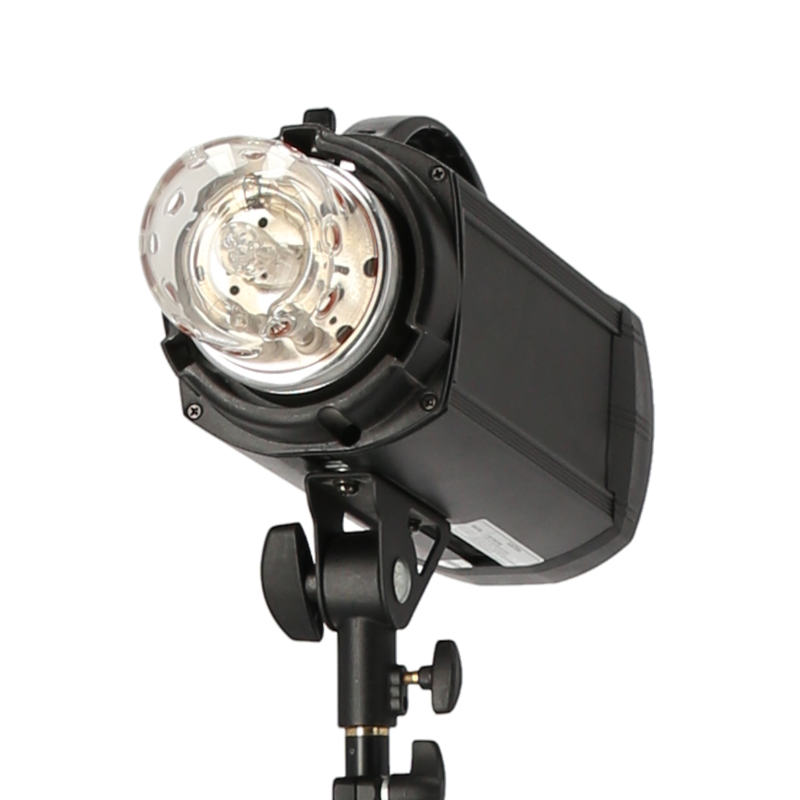
Strobe (flash) light
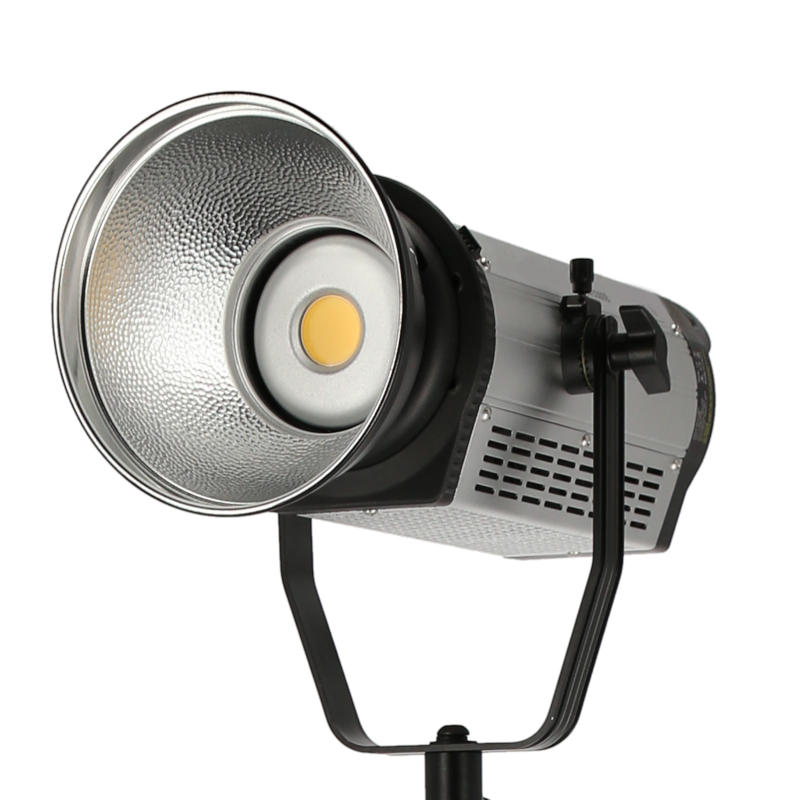
Constant LED light
- Background – in most cases when doing 360° photography, white background is the choice. It can be an industry-standard paper background – cheap, works great, can be easily replaced.
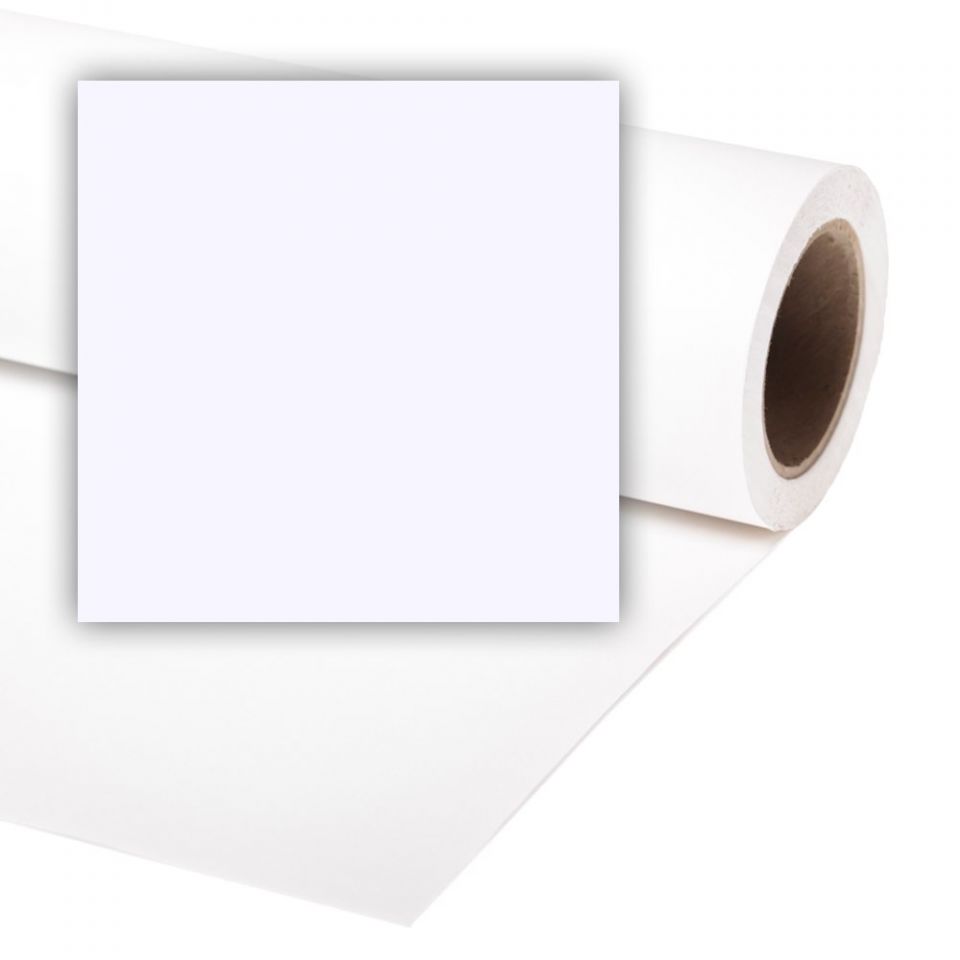
- 360° turntable – standing in front of a background. Choose a product which comes with software capable of controlling the camera, post-producing the 360° spin and exporting web-ready spins. In theory, you can use off the shelf software for post-production, but it won’t be practical to capture in one software, move to another application for post-production and export 360s in their one. Not good for efficiency…
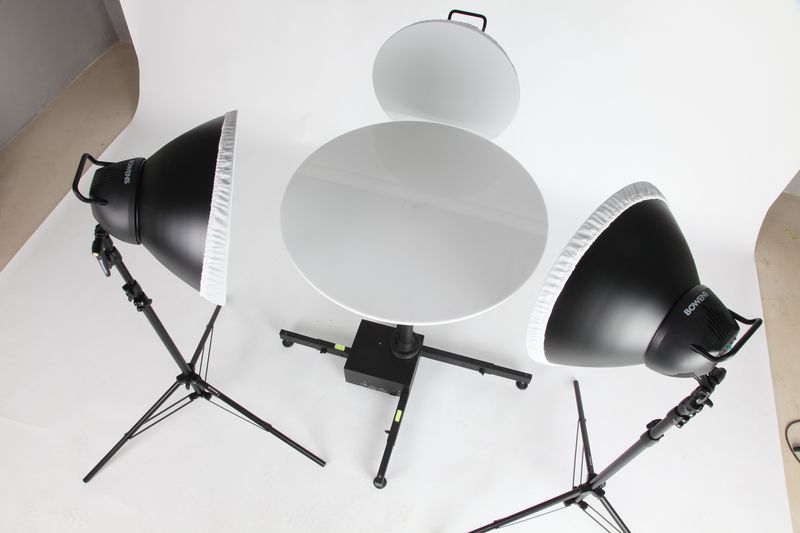
- Camera – you need a camera, which is compatible with your turntable software. Not all cameras can be controlled via software, some others have limitations (e.g. possibility to control one camera at a time). At this moment the most common camera for photo studio automation is Canon with Sony catching up. Nikons are also supported by some manufacturers, but due to software issues and inconsistencies are becoming less commonly supported. Without going into details I would recommend a mirrorless camera, with electronic shutter (no vibrations from shutter), 20-30MPx, with exposure simulation in Live View (if you are using constant lighting).
- Lens – A good lens for product photography should be flexible enough to cover your range of product sizes. It’s a good idea to use a zoom lens in the focal length of approx. 40-100mm, which makes it easier to frame. You do not need expensive “bright” lenses with high apertures (e.g. f/2.0), f/4.0 is usually more than enough. For some type of products, such as small jewellery, you will need a macro lens.

- Tripod/stand – invest in a big, stable and heavy tripod (yes, heavy is good!). A heavy tripod is stable, and it doesn’t flip so easily when you move around it and bump into a cable (and you will). If you have a budget, consider a column stand, which will give you an easier and faster camera positioning.

Manfrotto 055 tripod
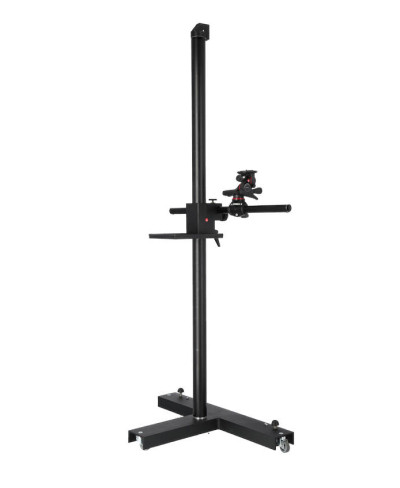
Manfrotto 806 mini salon stand
- Camera head – Geared head with angle position marking will make it easier to set up and repeat camera position for different products. Manfrotto MHXPRO-3WG head and reliable products I used a lot in the past, but you can go for any other similar grade products.
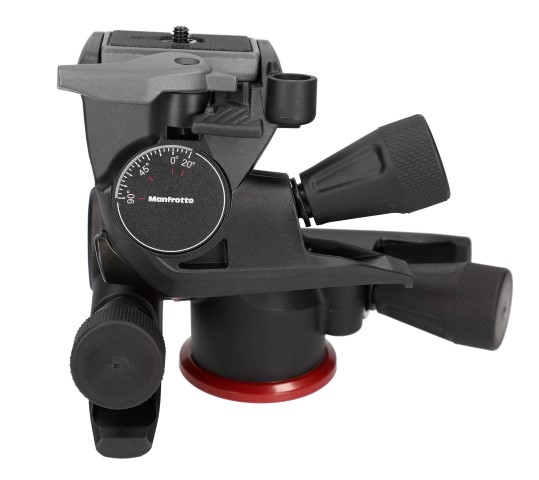
- 360° software – you need something to control the equipment: the turntable and the camera. In the worst case, it can be a separate software for each (not recommended!): software supplied with the turntable for controlling the rotation, camera software to set up the camera and download images remotely (in this case camera is synchronized with a turntable with a shutter release cable). You also need something to batch process images (at least levels, sharpness) e.g. Lightroom. Affinity Photo. On top of it, you need a 360° object “stitching” software that produces a web-ready spin and compatible viewer. The last thing can also be a 360° sharing service or an e-shop 360° plugin. In this case, you only need to create separate 360° images and upload online. In the ideal situation, the whole bunch of different 360 product photography software can be supplied in one application from the turntable vendor.

- Workstation (Mac or PC) – make sure the workstation OS (Mac OS/Windows) is compatible with the turntable software – not all 360° photo equipment suppliers support both platforms.
Automated photo studio
Full-size automated photo studio (Orbitvu Fashion Studio)
If traditional 360° photo studio equipment sounds complicated, it’s because it is complicated and requires a lot of experience and knowledge to pick-up the right tools and set it up altogether. If you want to go easy and make sure all works flawlessly, your option is a compact automated photo studio. In this case, you need:
- automated photo studio cabin – it comes with lighting, background, camera mount, embedded turntable and integrated software. E.g. Orbitvu Alphashot XL does capture, on-the-fly background removal, advanced post-production (levels, cropping, object auto-centring, etc.), export to a number of file formats (Orbitvu Deep Zoom 360° Viewer, Gif, Video animation) and direct publish to the online cloud (Orbitvu SUN) or directly to e-shop (using e-commerce plugins for most common e-shops).
- camera – your choice will depend on the supplier of the automated solution.
- workstation (Mac or PC) – pay attention that your workstation runs a compatible operating system with the automated solution. You need to pay attention to a specific version of the OS – e.g. macOS 10.15 may be compatible with macOS 10.16 maybe not.
360° product photography capture process
Capture process will be a bit different in case of traditional and automated product photography. Photo automation makes it easier to centre, light, capture and publish the final result online.
Prepare (style) the product. Unlike still photography, you need to make sure that your product looks good from each side.

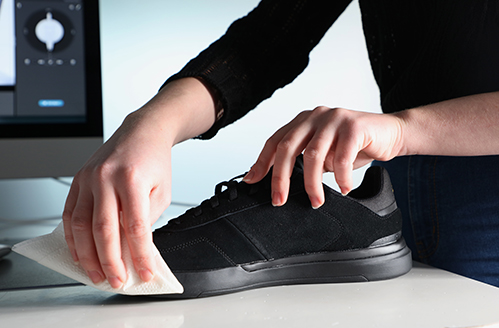
Centre the product on the turntable. Regardless of which studio you are using, the rotating object should be centred on the turntable. The more symmetrical the object is, the more visible any centring imperfections are. The easiest way is to use markers on the turntable. Advanced automated studios come with laser pointers and backlighted markers not visible on the turntable.
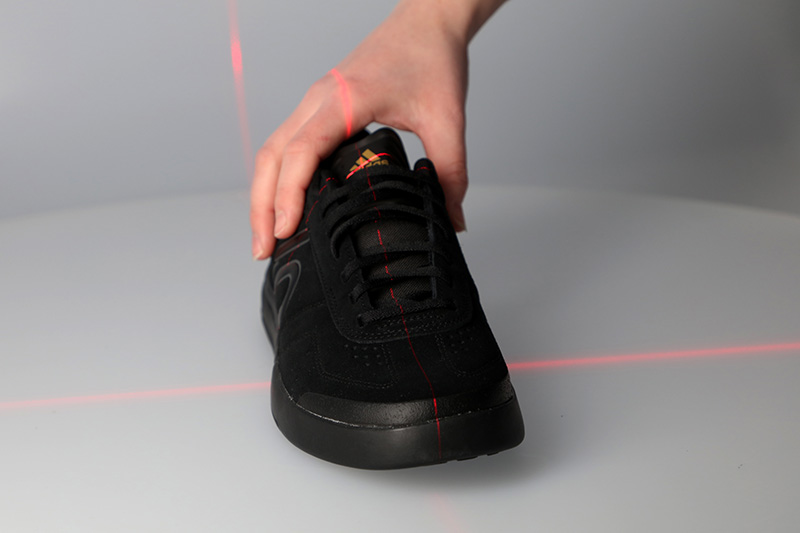
Light the product. Make sure your product is lighted in a way so it looks naturally (not too dark/bright), it’s texture is well exposed and it looks attractive. You need to set up lighting manually for each product. In the case of photo automation, you can also use factory or custom templates for lighting and camera setup.
Light the background. Your goal, when making 360° spin in the traditional way, is to achieve a pure white background. When using an automated solution you don’t care about the background as it is automatically removed during the capture process and added in the post-production.
Frame the product. You need to make sure that the product captured in 360° view stays within the image frame and its centre of rotation is in the centre of the 360° image. It is more difficult than it sounds. Photo-automation systems make it much easier as you only need to keep the product within the image frame. The product is auto-centred in the output 360° view.
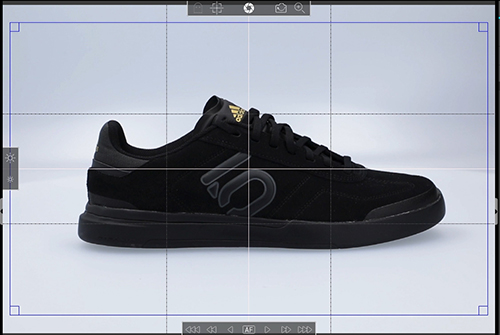
Capture images around the product. Typically software will control the turntable and synchronize it with camera and lighting so the process is automatic.
Post-process the 360° image. The traditional process will require more image tuning: you need to make the background white using the levels tool. You also need to crop the image manually to adapt to the final scale ratio. Automated photography simply replaces the background with a white one. It also takes care of cropping, scaling and centring objects during the final export.

Produce a web-ready 360° spins. This process is also called 360° object stitching. Usually, a software coming with the 360° turntable, or with a 360° viewer creates final web-ready files that just need to upload online. Photo-automation software can go one step further and automatically uploads images to an online 360° sharing service or e-shop.
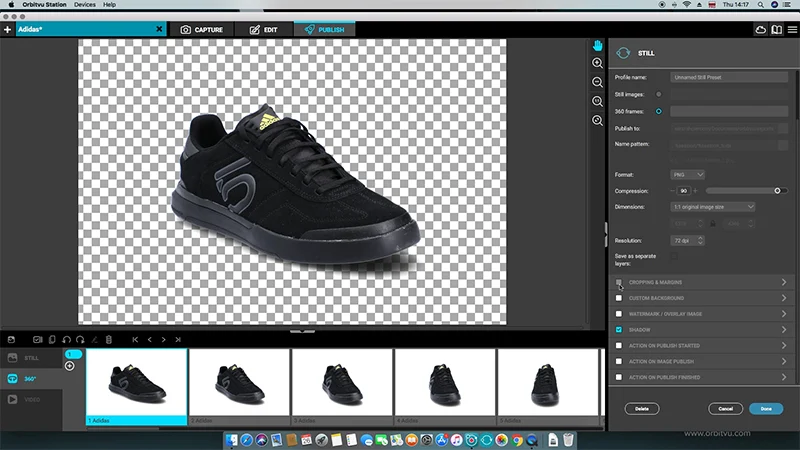
In-house 3D product photography studio (spherical/hemispherical)
Regardless the technology 3D photography adds a higher level of complexity (and cost) to single row 360° spins. 3D images not only take longer to produce, but they also require more product preparation and more camera setup. To be efficient you need a special multiple camera rig (commonly for 4-5 cameras) precisely distributed at different vertical angles. You also need a product that will justify the extra costs. In many situations, 360° spin and several still images do the job better than a 3D spin which also takes much longer to load.
360° product photography equipment
Usually, a 3D gear is an add-on to a 360° turntable. You can choose between a robotic arm or a multi-camera 3D rig. If you make a decision to go for 3D photography, you will need equipment that will be efficient. 3D robotic arms look cool but they take much more time to capture a typical 3D spin. Capturing 36 images in 5 rows (180 images) using five cameras, is much faster than using just one.
You need more cameras – for consistency it should be the same brand and model. As for now, only Canon supports multiple cameras to be controlled within one system. Unless your 3D right has a built-in USB hub, make sure to buy one otherwise you will end up with a countless mess of cables.
You need proper software capable of 3D spins post-production and publishing. Usually, 3D rig manufacturers (which also provide 360° turntables) would supply a proper software.
Before choosing a 3D photography equipment it is a good practice to make some real-life tests: choosing a few common samples and testing the efficiency of the 3D capture process. Then make a decision if the result is worth the effort.
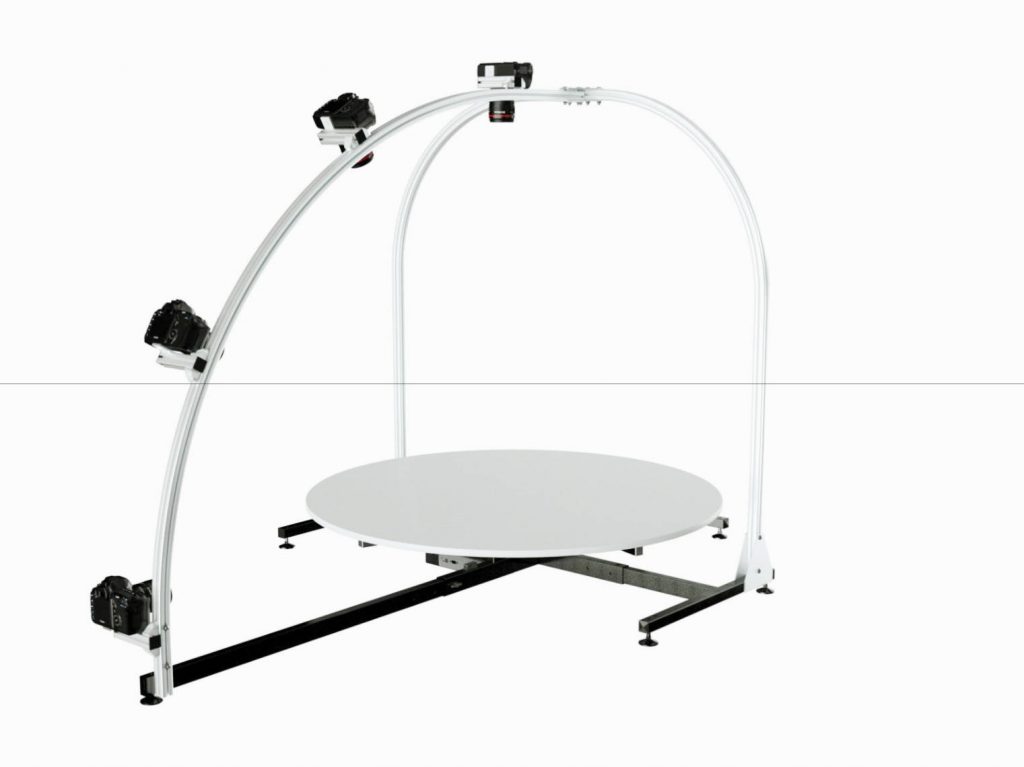
Summary
360-degree product photography can be highly beneficial but come at a cost. Based on your volumes and budget you can design a cost-efficient 360° creation workflow whether outsourced or made in-house. 360° spins add more information to your product, reduce the gap between brick-and-mortar and online and bring your customers closer to your products and your business.
Contact us
Contact us
Got questions? We'd love to hear from you. Send us a message and we will respond as soon as possible.
Products
Products
Articles you may also like
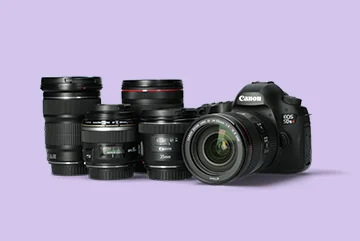
Are you looking for the best lens for product photography? Are you struggling to make an optimal decision within your budget?...

93% of consumers consider visual appearance to be the key deciding factor in a purchasing decision; therefore, for eCommerce ...
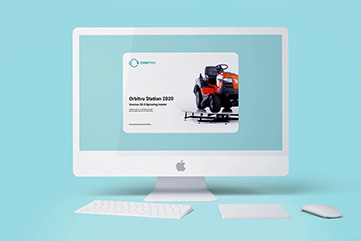
We are very excited to release Orbitvu Station 20.2 “Spinning tractor” 😉 This release brings a bunch of new features includi...








